Are you an app owner or you intend to create one soon and you are wondering: Are app updates important? How often you should update your app? App owners are free to make updates available whenever they want, but then when is the best time? There is also the question of what should be done and what parameters to follow.
According to the research, in 2024, over 1.8 million apps are expected to be available in Apple’s App Store, and we’ll see over 3.9 million Android apps on Google Play.
Our lives as modern humans have been greatly improved thanks to mobile applications. The mobile technology industry has provided a solution for almost any type of task you could be indulged in. Hence, such solutions must be up-to-date for better use.
At the same time, the number of mobile apps is still on the rise. Every single app available on the app store is competing for user attention. Thus, it’s always essential to update applications.
User-Driven Approach
Watch our webinar and learn the top ways of reducing poor user satisfaction, low adoption rates, and decreased loyalty.
Why Is It Necessary to Update Apps
Having understood why we can’t separate our lifestyles from the use of mobile applications, we need to also understand the importance of application software updates. The basic truth and foremost reason for updates is the fact that they can improve the user experience. However, there are other benefits of updating apps.
Bracing the UI and UX
Whenever you discover a more engaging way of interacting with users, it might be good to update your application. In some cases, this overhaul can be just for some parts of the app. However, sometimes, its entire user interface and user experience can be refreshed.
An update, in this case, leads to more convenience and increased engagement in the use of the app. Frequency in updating your app will keep it relevant and up-to-date. It makes your users know that you care about them. This is because every update will include new feature releases that provide a smooth user experience.
Promoting and Marketing
The apps’ updating has the considerable benefits of a marketing tool for its owners. Consumer awareness of your product or brand is the key here.
With the increase in the number of applications present on a user’s phone and other devices, frequent updates can trigger an app to receive more mindshare compared to other apps. Publishing frequent updates serves as a reminder because it turns up with notifications on the App Store or Google Play store list.
Increasing the Userbase
You can build a trail of loyal users from your app updates. That is if they contain bug fixes and new features that users may have requested. The frequent updates mean that you care about your mobile app maintenance as well as reflect your commitment to meeting user needs.
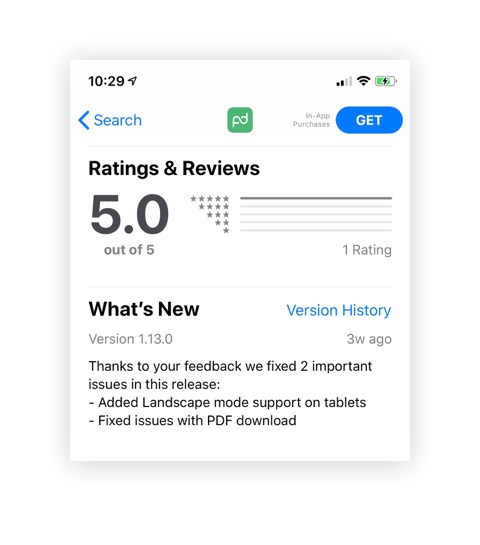
Overall, the satisfaction and loyalty of your current users directly reflect on their engagement with your app and brand. Furthermore, happy users attract more new users to your app. This is another marketing advantage.
Reducing Uninstalls
Same way as keeping an app updated affects acquiring users, it influences uninstall rates. If you don’t provide maintenance for your application, upgrade it and implement new features, or can’t meet user expectations — they will most likely abandon your solution and switch to your competitors.
Thus, it’s essential to collect feedback and listen to your target audience’s preferences. This way, you’ll be able to deliver the best user experience on time and avoid the rise of uninstall rates.
Communication between Developers and Users
A mobile app update is what a developer and the user base can communicate through. It’s like a medium that allows for the converastion through release notes. Although release notes are often ignored by most users, some nerds and geeks always read them carefully, and it benefits them.

Their feedback on your update won’t keep you waiting. Just check out the reviews on the app store. Unlike the release notes, ratings and reviews are frequently viewed by all users. Thus, a good update can attract more mobile app users. Also, consider that updates can be used to renew your user terms and conditions.
Bug Fixing, Improvements, and Stable Performance
The aim of an update might be to fix bugs, but new features and bug fixes can be released together. The usual practice is to pay more attention to updates that keep the app more stable.
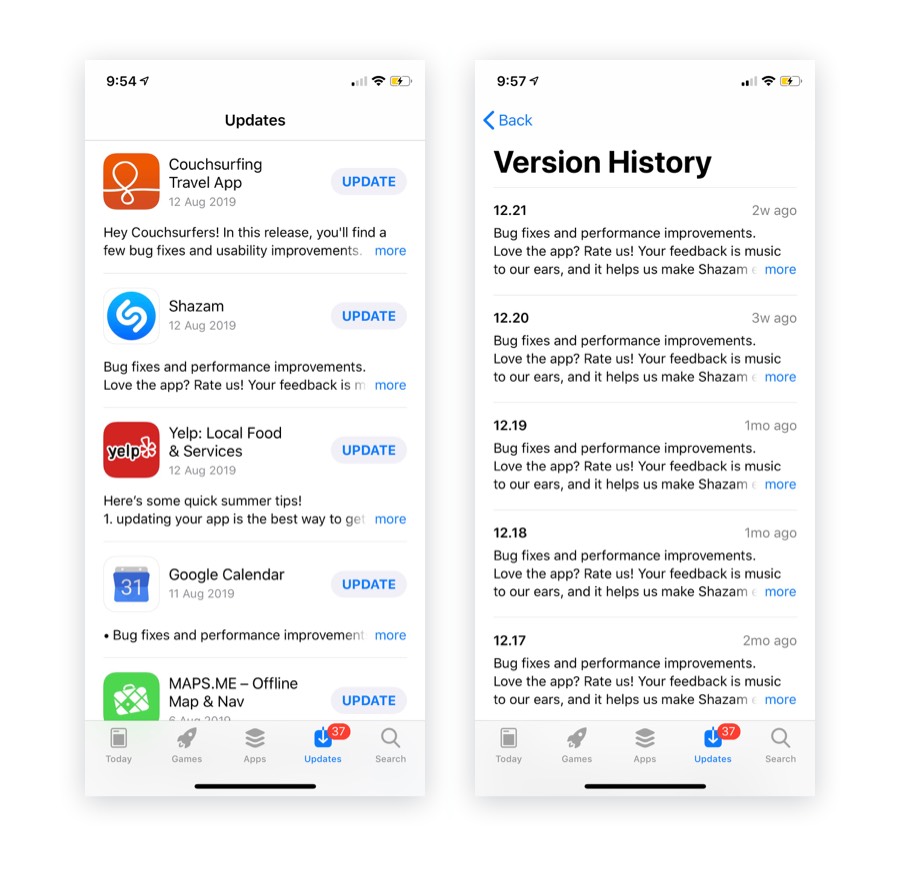
No wonder why do leading solutions with large user base have bug fixing updates so often. These mainstream apps are frequent with improving and stabilizing user experiences. Commonly, app updates with the occurrence of once a week or every fortnight are mostly bug fixing.
Prove of Activeness
Without updates, users can be under the assumption that an application is no longer active, and that’s why it has not been managed. To keep away the feeling that the app has been dumped by its developers, it must be constantly maintained by regular updates. This might also keep them away from migrating to other competing solutions.
Boosting ROI
As an obvious consequence, regular updates can drastically reduce the cost of your mobile app maintenance and revenue losses. When you fix occasional issues on time and handle minor bugs, it’s easy to avoid any hurdles that might threaten your app’s wellbeing in the future.
On the other hand, like we’ve mentioned above, providing a better user experience helps attract new users, engage and retain them. It, in and of itself, can result in boosted ROI in the long run.
Read more about the Ways to Drive Mobile App User Retention
Support of Latest OS Features
New features allow apps to have new capabilities after every major mobile OS release. Each time Android and iOS put up a new feature, applications generally need to be updated in order to catch up. An update will help your mobile app to have access to the fresh software and hardware feature sets introduced by the manufacturers.
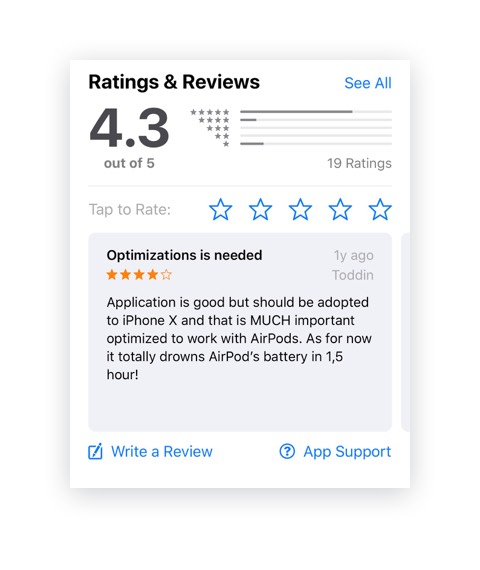
Not too long ago, the two tech giants had words for mobile app owners. They are trying to make all apps compliant with the latest versions of OS and usable hardware. It was an emphasis on building up-to-date APIs that ensure a high-trust level of security and better performance.
“Apps may only use public APIs and must run on the currently shipping OS. Keep your apps up-to-date and make sure you phase out any deprecated features, frameworks, or technologies that will no longer be supported in future versions of an OS.”
– Apple
According to Google, new apps must support Android 13 (API level 33) or higher; this doesn’t refer to Wear OS which must target a version between Android 11 (API level 30) and Android 13 (API level 33), inclusive. From August 2023, this applies to all app updates, too.
Implementing the App Store and Google Play Policies
Google and Apple don’t only approve what updates to be published. They also show some apps to the door. In recent times, both the App Store and Google Play have been weeding out inactive, non-updated and non-compliant applications that have been lagging behind for a long time. This is to keep the app market sane and well regulated.
Apple stated in 2016 when it commissioned a cleansing campaign to dispose of “no longer useful” apps from the App Store:
“We are implementing an ongoing process of evaluating apps, removing apps that no longer function as intended, don’t follow current review guidelines, or are outdated.”
Google Play was not left out of the gig too as it is focused on making its applications comply with its latest privacy policy. Google stated:
“Google Play requires developers to provide a valid privacy policy when the app requests or handles sensitive user, or device information.”
Now you know why do apps update so often. Let’s talk about how you should approach your mobile application update.
How Often Should My App Be Updated?
The more features you have in your backlog after the app release, the faster you will want to add those features in the upcoming updates. In this case, user feedback will significantly help to prioritize the list of features.
How often should you update your app? Any update must be motivated by important factors such as an understanding of your market, qualitative user feedback, and quantitative data. You have to balance all these factors mentioned against the rate at which you update your application.
Monthly App Updates
The top user apps are mostly updated weekly while other regular apps with average demand usually get at least an update only once a month. Thus, monthly updates of mobile apps serve as a minimal time for their frequency.
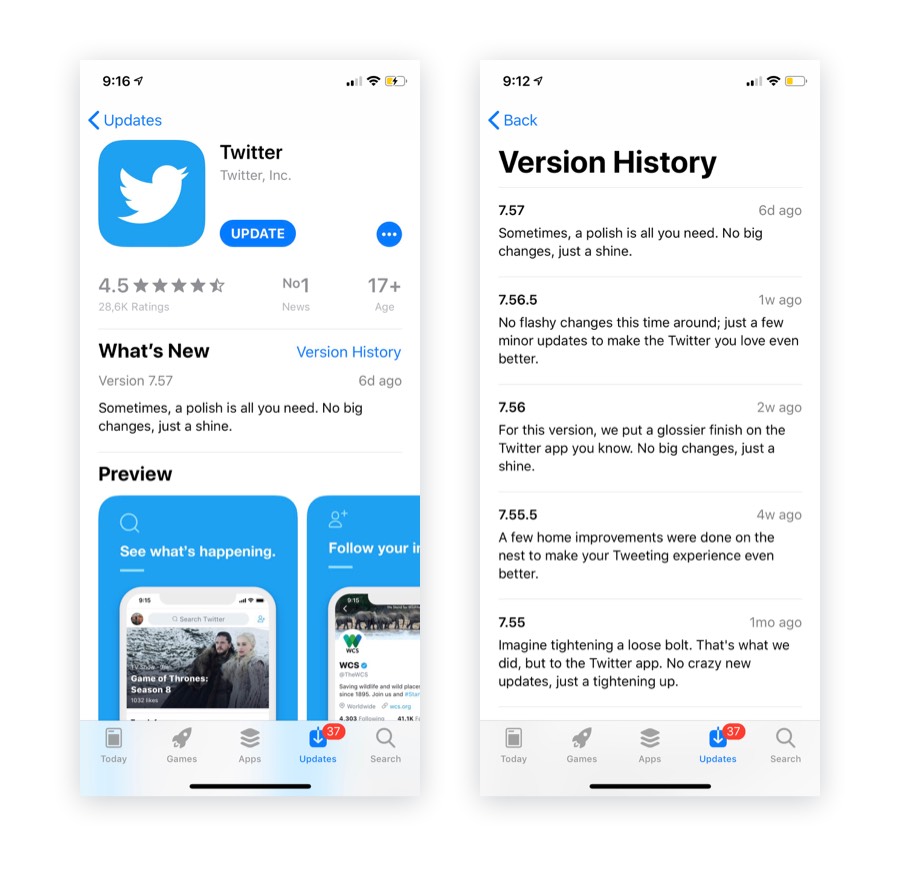
As an app owner, for you to have at least some level of competition in today’s market, you must release updates for your product on a regular basis. Updating monthly guarantees your app to be up-to-date with the latest market trends and expectations. Without this, even if you have a great app trending now, it will become outdated in the span of months.
App Feature Release Updates
How frequently your app updates occur will mostly be driven by the types of features you try to tackle. The more features or the larger the feature, the longer it will take to get an update on the mobile devices of your app users.
Some features take more time to develop. It’s advisable to focus on the features that take not more than two weeks or fashion them to fit this period.
Assuming you get to finish developing a new feature in a two-week development cycle, you still need to test for QA. Based on experience, the interval for store approval also takes some time. In total, you will be aiming at the four-weeks target. And that keeps you on the verge of a monthly update release.
For instance, you have a complex feature to release, and you need several sprints and a lot of hands-on-deck for it. Then you need to plan 2-3 updates in advance and balance this big feature release with bug fixing and small enhancements.
Meanwhile, you need to expand your team or find a vendor with an adequate number of developers. Like it or not, a bigger team of developers has the potential to deliver multiple releases quicker. The division of labor will help the developers cover a lot of technical tasks at once.
Need help with your mobile app maintenance?
App Update Based on User Feedback
User feedback is very significant, hence you must have various feedback channels for your users. To have more opinions, check-out other user comments from your competitors to enable you to compare user responses and reactions to a new feature before it is released. By this comparison, you can be sure of the value of an update and know if it will be likable by your mobile app users.
Observing trends in the feature requests of your users can be useful to make the next sets of updates. Always have a listening ear for complaints regarding your app. Sometimes the pre-release tests might not fish out some bugs.
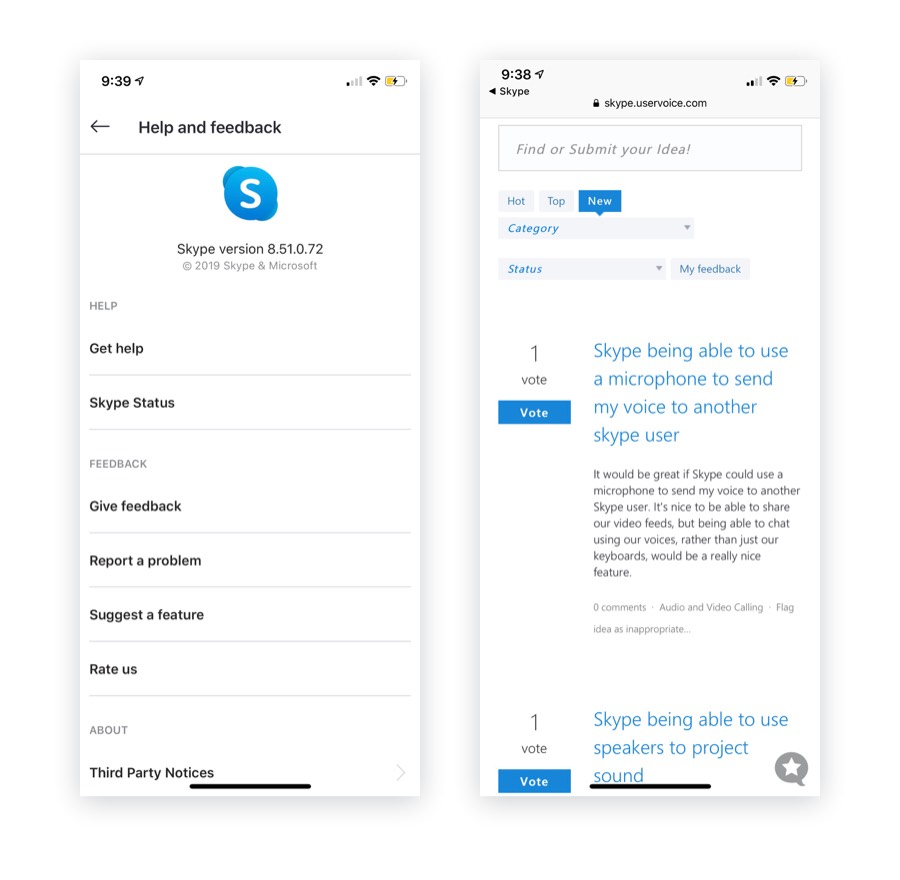
Reports from users can be the inspiration for the next feature update. Demonstrate interest in your customer’s opinions by resolving issues quickly as users raise them.
In-app surveys and website polls can be a good avenue to figure out from your clients what features are appealing to them. The feedback from such surveys can be a pointer to potential new features for your app. The opinions from users can also help to get rid of redundant or old features you intend to remove by your users voting.
App Update in Line with your Milestones
One of the ways of determining how often to launch updates is to make it coincide with your application milestones. It could be some special event or the celebration of your release anniversary with some facelift, it can motivate more user engagement.
Keeping updates to pace with your milestones is a fair timing to refresh your application and keep it in vogue. It also gives you the chance to make promotions and discount sales for in-app purchases. If your updates are spaced out across the app’s milestones, you have a chance to consider larger-scale changes.
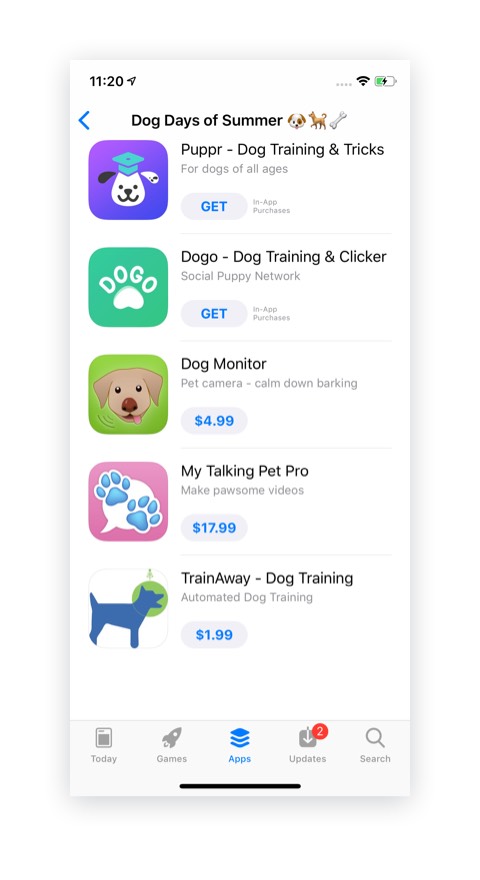
Rolling out your updates in pace with each new version of mobile operating systems is another tip. You can assess your application with every new Android and iOS release to plan fresh features and adjustments. You must make sure everything in your app is intact with the latest operating system and roll out the update right after the mobile OS release.
Update as the Market Trends and Conditions Change
Apps will always evolve progressively with new updates. This is evident from the nature of the apps that we had in the past compared to what is obtainable today. Despite using factors like milestones and OS updates to dictate the best time for an app upgrade, we cannot ignore the present trends of the mobile app market.
Considering that the market trends are always on-the-go and rapid, developers must catch up with regular updates. Pacing with the market is the only way to stay relevant in the mobile app industry. You need to constantly search for market information.
Such info is available in the app store and market research reports. Look up feedback for both your product and that of your competitors. See the competitive edge for you and against you. With that, you will be able to tell what your users want next. The opportunities for you to improve your app are closely related to the changes and developments in the market.
The Essentials of Mobile App Maintenance
While you now know why and how to update your app, it’s also worth mentioning a couple of other important things. They include the circumstances that impact updates and the budget you need to allocate for app maintenance.
Mobile Application Maintenance Types
To provide you with a comprehensive view of our today’s topic, let’s briefly cover the key types of mobile application maintenance. Above, we’ve shared tips on how often the apps should be updated. However, the list below can also give you some hints about when else it’s better to work on your app improvements.
Depending on the case, app maintenance can be:
- Emergency
- Perfective
- Adaptive
- Preventive
- Corrective
As these names are self-explanatory, you can guess that the best forms of updating your solution are perfective, adaptive, and preventive. They allow for steady improvements without impacting users directly and often taking into account their preferences.
Mobile App Maintenance Cost
So, how much does it cost to update an app? Well, as you might guess, it all depends. It depends on whether you need to fix minor issues or, let’s say, implement a new robust feature. However, based on our experience, we recommend allocating 15% of your app development budget for its maintenance yearly.
It may be different with the first year of your app’s life, where, some experts say, maintenance can take up to 50% of the initial app development cost. This is reasonable since, most likely, you’ll get some feedback after your app’s launch and want to introduce the improvements based on it.
To give you more details, let’s take a look at the breakdown with some rough examples of app maintenance costs.
Maintenance Category |
Percentage of the Initial Development Cost |
Maintenance Cost for a $100K App |
|---|---|---|
| First year maintenance | 50% | $50,000 |
| Ongoing yearly maintenance | 15% | $15,000 |
| Minor bug fixes and updates | 5-10% | $5,000 – $10,000 |
| Licensing | 5-10% | $5,000 – $10,000 |
| Third-party service updates | 5-15% | $5,000 – $15,000 |
| Security and compliance | 5-10% | $5,000 – $10,000 |
| Infrastructure and hosting | 5-10% | $5,000 – $10,000 |
| Performance optimization | 5-10% | $5,000 – $10,000 |
| App Stores developer fee | Fixed Fee | $99/year for Apple, $25 one-time for Google Play |
Final Tips for App Publishers
Nothing will beat regular updates for your app, keep this fact in mind. Besides frequency, they must be in tune with customer feedback and the latest market trends. All put together can drive the desire for your app and keep you competitive on app stores.
Take note that it takes 24 to 48 hours for the update to become available for iOS devices and up to 24 hours for Android after a mobile app has been submitted to the stores.
On the brighter side, except for major changes, apps built with React Native can capitalize on OTA (Over-the-Air) updates. The beauty here is that OTA empowers developers to put out additional but rather minor changes and bug fixes. This can be done as urgently as they are needed, skipping the approval of the app store.
Usually, most of the leading applications have a roadmap that controls the frequency of updates starting from the release date, and it goes beyond. However, the lesser the volume of code, the lesser the bugs turnout. This, in turn, leads to fixing bugs faster and updating on time.
Are you in need of worthy support and maintenance services for your mobile application or you are about to make a top app? Our team of business analysts and developers at Velvetech arise to such occasions with much dexterity. We have a highly competent team that covers a full product development cycle from research and planning to ongoing support and maintenance. Contact us today to discuss your app.































